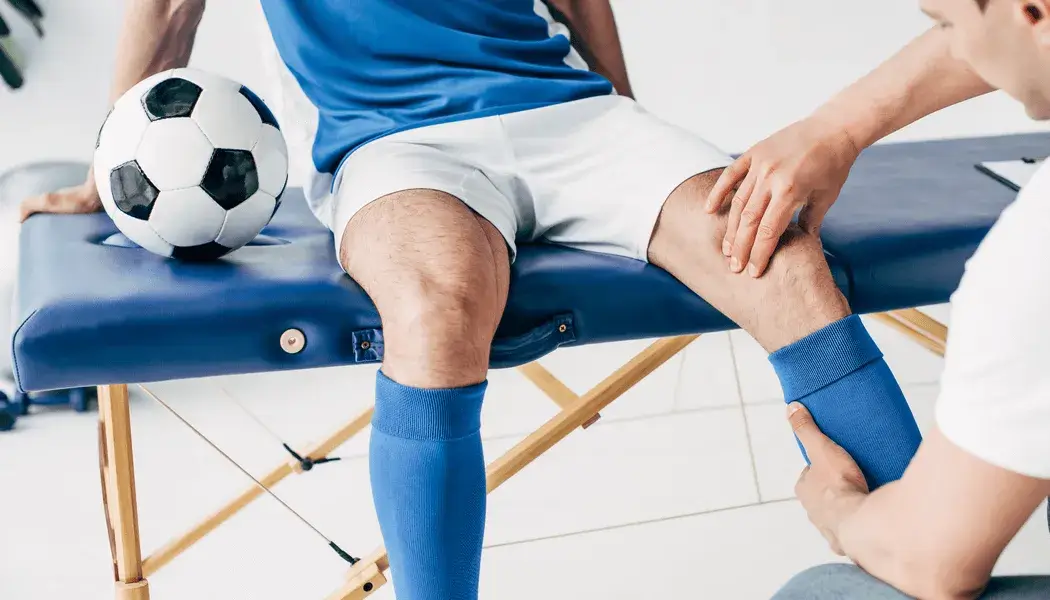Unlocking Balance and Stability: The Power of Vestibular Rehabilitation for Vertigo
Every step feels like a stumble. The world spins, even when you’re sitting still. Your favorite activities become a daunting challenge. Sound familiar? These sensations can be debilitating and may indicate you’re experiencing vertigo. This is where our revolutionary vestibular rehabilitation for vertigo comes into play. Individuals can reclaim their balance and stability by tapping into advanced physiotherapy techniques.
Imagine walking your dog in the park on a sunny afternoon, and suddenly, the world tilts. You grip the leash tighter, trying to keep your balance. Every step feels like you’re on a merry-go-round that won’t stop. Crowds, busy streets, and even your office’s computer screen can be overwhelming. This isn’t just a fleeting sensation; it’s an unwelcome intrusion into your daily life, work, and the activities you cherish.
Vertigo isn’t just a ‘head-spinning’ moment from a dizzy spell. It’s a real, persistent challenge that many face daily. We know because we’ve seen countless individuals walking through our doors, faces etched with frustration, searching for a solution.
Here’s the good news: Just like how a software glitch can be fixed, so can the bugs in your vestibular system. Vestibular rehabilitation at Raynen Therapies targets these bugs, using specialized exercises to improve balance, reduce dizziness, and, most importantly, restore normal life activities.
Don’t let vertigo dictate the rhythm of your life. Call our clinic today or continue reading to further empower yourself with knowledge and the prospect of a life free from vertigo’s spins.
Vestibular Rehabilitation for Vertigo: Unmasking the Spin
Vertigo is a symptom, not a condition; it’s a sensation that either you or your environment is moving or spinning when neither is moving. These feelings are uninvited and can appear without warning.
Imagine trying to read a book while sitting on a merry-go-round. Everything seems to whirl around, and no matter how hard you try, you can’t focus on the words. That’s vertigo in a nutshell.
Those experiencing vertigo might also notice the following:
- Nausea or vomiting
- Unsteadiness or a loss of balance
- A sense of being pulled in one direction
- Ringing in the ears or hearing loss
- Difficulty focusing or tracking moving objects
These symptoms aren’t exclusive to a specific age or lifestyle; vertigo doesn’t discriminate. People from all walks of life can and do experience these disorienting sensations.
Several triggers can set off vertigo. Some common causes include inner ear infections, migraines, certain medications, or head injuries. But it’s not the same for everyone. Here’s what research tells us:
- Age Factor: As we grow older, we’re more likely to experience vertigo, especially after age 60. But it can still affect younger folks.
- Gender Differences: Women tend to be more susceptible to certain types of vertigo, such as benign paroxysmal positional vertigo (BPPV), especially during hormonal changes.
- Other Risk Factors: Past head injuries, specific medications, and prolonged bed rest can increase one’s likelihood of experiencing vertigo.
But here’s the silver lining: with vestibular rehabilitation, vertigo can be managed, treated, and, in many instances, fully resolved.
The Power of Physiotherapy and Vestibular Rehabilitation for Vertigo
But vestibular rehabilitation for vertigo doesn’t just address the symptoms; it delves into the root cause, offering a holistic approach to healing. Our trained therapists will assess your medical history, the intensity and frequency of your symptoms, and any related conditions. This ensures a diagnosis that’s tailor-made for you.
Every vertigo case is unique. A detailed treatment plan will be charted based on your specific needs, using the most effective strategies and techniques for speedy recovery.
The Pillars of Vestibular Rehabilitation:
- Balance and Gaze Stabilization Exercises: These aim to improve the brain’s communication with the inner ear, enhancing stability.
- Habituation Exercises: Designed for those who experience vertigo from certain motions or visual stimuli. These exercises help to reduce the response to triggers over time.
- Canalith Repositioning Procedures: Especially beneficial for BPPV patients, these maneuvers help relocate tiny calcium particles in the inner ear to reduce symptoms.
These methods are effective in patients with vertigo, especially when combined with our tailored physiotherapy, including:
- Balance and Gait Training: Balance exercises using tools like stability balls, foam pads, and BOSU balls can improve proprioception and reduce fall risk. Gait training helps improve walking patterns, making movement more stable and less fatiguing.
- Neuromuscular Re-education: This aims to improve movement patterns, coordination, posture, balance, and muscle memory. It often involves activities that challenge the brain and body to work together, aiding in retraining the nervous system.
- Functional Training: This tailors therapy to the specific activities or hobbies of the patient, ensuring they can return to their regular activities safely.
By combining vestibular rehabilitation with other therapy treatments, patients can often experience quicker relief and a smoother return to everyday activities, minimizing the risk of future episodes.
Take the Next Step To Better Balance
Vertigo doesn’t have to be a constant struggle. Balance and stability can become your reality with the right knowledge, tools, and guidance.
If you’ve been dealing with vertigo’s challenges and feel all too familiar, don’t hesitate. Discover how vestibular rehabilitation and physiotherapy for vertigo might be the pivotal step to a steadier tomorrow.
Call today to learn about this transformative approach to healing!
Sources:
- https://journals.sagepub.com/doi/full/10.1177/2473974X221119163
- https://www.ncbi.nlm.nih.gov/pmc/articles/PMC9258437/
- https://pubmed.ncbi.nlm.nih.gov/26111348/
Tags: Physiotherapy, Physical therapist, vertigo, vertigo relief, Vestibular Rehabilitation




